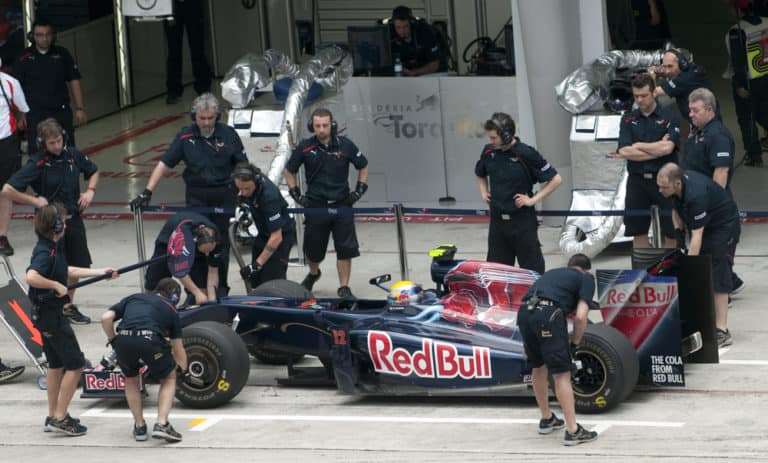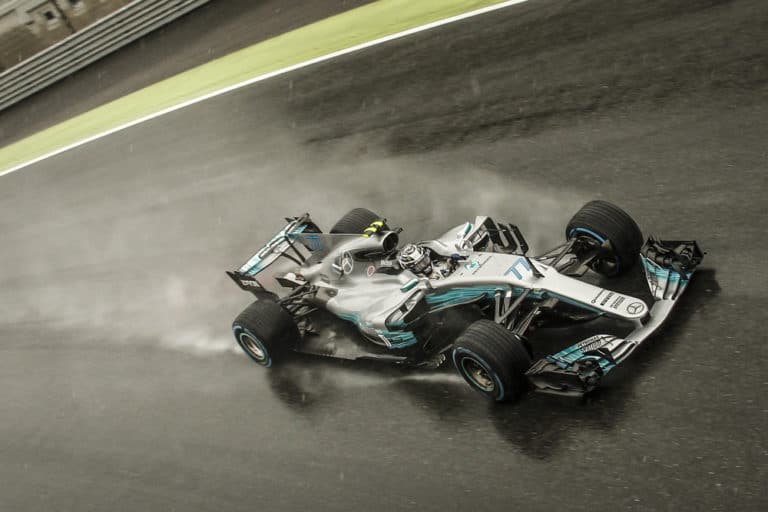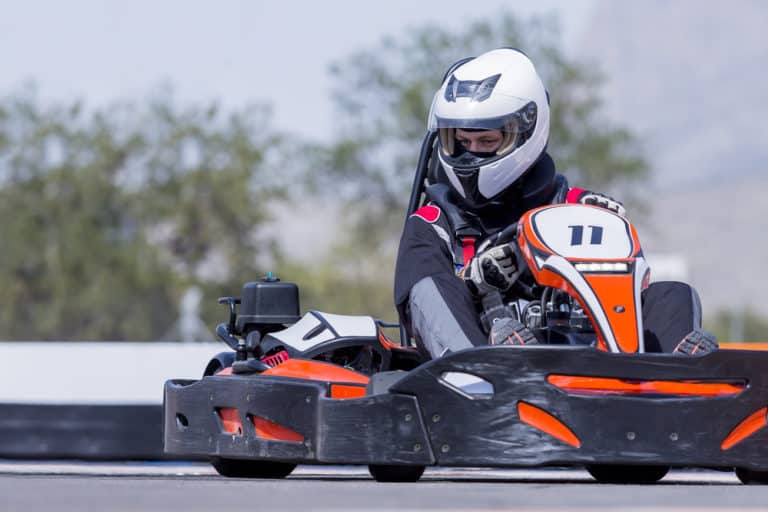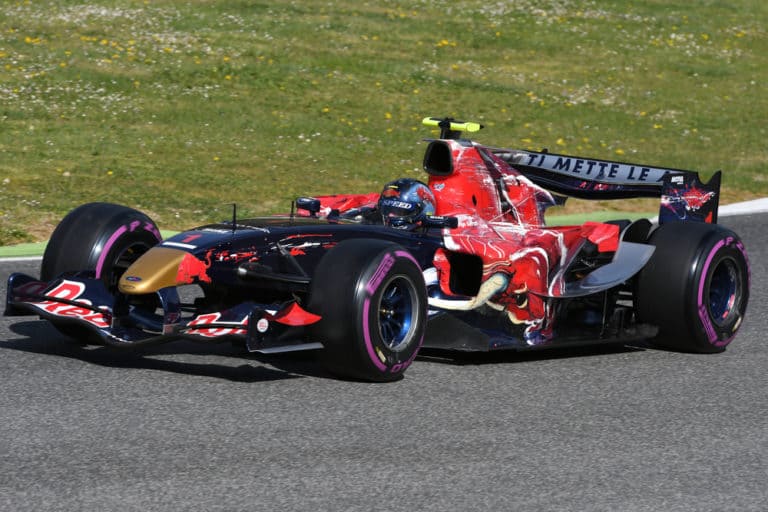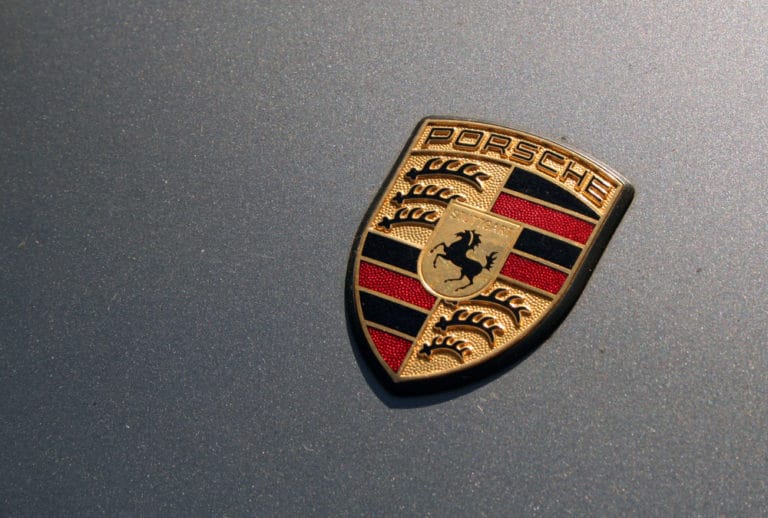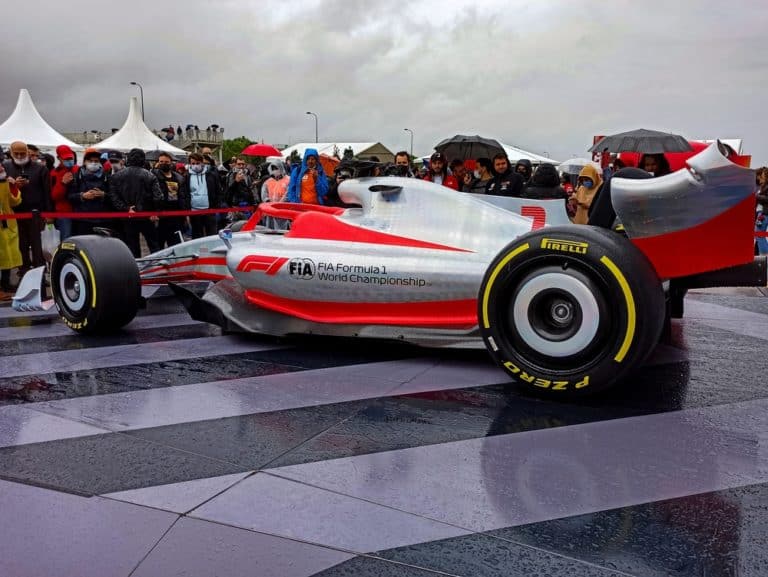Subject to the changes introduced by the FIA in 2022 to Formula One regulations, numerous Formula One drivers like Esteban Ocon, Kevin Magnussen, and Lando Norris have commented that the improved racing resulted from the changes is akin to Formula Kart racing. However, what exactly does that mean, and how do Formula One and Formula Karting compare to each other?
While karting and F1 are both motorsports, the former is an entry-level into motorsports while the latter is considered the pinnacle of motorsports. Thus while go-karting is a mostly leisurely activity with a competitive scene, Formula One is reserved for the best drivers in the world!
We will explore each sport’s mechanics, driving experiences, competitions, and cost to better understand the difference between go-karting and Formula One. Whereafter we will see the impact go-karting has on past and present Formula One drivers!
If you’re looking for some F1 merchandise, check out the awesome stuff at the official F1 store here.
What Is The Difference Between A Go-Kart And An F1 Car?
Although some people mistake go-karts as simply being small Formula One cars and visa-versa, there are considerable differences between go-karts and Formula One vehicles.
The Mechanics Of A Go Kart
Although it’s an oversimplification to call a go-kart a “lawnmower with a steering wheel,” as some online commentators have expressed, they are extremely basic vehicles designed for casual driving or competitive driving among younger drivers.
While different go-karts have different specs and build, they typically consist of the following:
- A chrome-moly tubing chassis with no suspension (furthermore, chassis are split between open karts, caged karts, straight chassis for sprints, and offset chassis for speedway racing.)
- Disc breaks mounted on the rear axle, front axle, or dual master cylinders for shifter karts.
- A power unit consists of a two-stroke engine, a four-stroke engine, or an electric motor.
- The transmission, which provides torque, allows go-karts to shift into reverse and shift the go-kart into neutral.
- Despite their small size, go-kart wheels are made from magnesium alloy, aluminum, and/or composite materials.; allowing them to handle forces over 2g.
- The tire manufacturers include but are not limited to tire manufacturers like Bridgestone, Dunlop, and Maxxis, as well as kart tire manufacturers like MG, MOJO, Vega, Cobra, Hoosier, and Burris.
- Tires come in different compounds and types like slicks, rain tires, and special spiked/grooved tires.
- Data acquisition software is usually only included as an extra component for professional go-kart drivers/teams.
Overall, professional go-karts weigh between 75kg and 79kg without the driver and can reach top speeds upward of 160km an hour (depending on the competition and regulations.)
In conclusion, go-karts are versatile cars that can be fine-tuned into advanced vehicles that can efficiently and effectively handle various tracks and track conditions in the right hands!
The Mechanics Of An F1
Unlike the simplicity of go-karts, Formula One cars are some of the world’s most advanced and technical vehicles.
Furthermore, because they are designed for a singular purpose and a single competition (see below for further details), Formula One cars lack the diversity of go-karts as the FIA heavily regulates them.
Consequently, Formula One teams need to develop their chassis and/or power units subject to strict regulations:
- The chassis of a Formula One car must weigh a minimum of 740kgs, including the driver and fitted dry-weather tires (although fuel is not included). Consequently, their chassis is made from carbon fiber composites and similar ultra-lightweight materials.
- The chassis requires Formula One constructors to become creative with their aerodynamics, side pods, wings, air box, and nose box. These are highly technical, given the extreme forces exerted on a Formula One car during a race.
- Since 2014, all Formula One engines have been turbocharged 1.6 L V6 Engines. Many can reach top speeds above 320km/h!
- The transmission of a Formula One Unit includes eight forward gears and one reverse gear. These semi-automated sequential gearboxes are controlled with paddle shifters on the sides of the vehicle’s steering wheel.
- Most Formula One cars’ steering wheel costs over $50 000. It is a highly advanced piece of equipment for driving, communication, and data acquisition.
- Unlike go-karts with numerous tire manufacturers, Formula One tires are manufactured by a single company, subject to a contract with the FIA (at the time of writing, Pirelli is the tire manufacturer for Formula One.)
- Formula One tires have different gradients and types, all of which are subject to FIA and Pirelli regulations, to ensure each team has access to the same tires throughout the season.
- The disc brakes of a Formula One vehicle consist of a carbon composite rotor and caliper at each wheel. For safety reasons, Formula One breaks are designed to withstand temperatures up to 1800F and can decelerate a Formula One vehicle from 100km/h to a complete stop in approximately 15 meters!
In conclusion, although Formula One vehicles are highly technical, there is limited creativity and customization compared to go-karts.
However, the singular purpose of a Formula One car, the business of Formula One, and the skills needed to drive them to make this focused engineering some of the most advanced in the world!
How Do Go-Kart Competitions Work vs F1?
While most people may associate go-karting with a leisurely activity, numerous professional go-karting tournaments globally are an entry point into professional motorsport!
Let’s explore go-kart competitions versus Formula One competitions below:
Go-Kart Competitions
Go-kart competitions run the whole gambit from casual tournaments at a local race track to professional national/international tournaments hosted by the FIA or professional karting bodies like the World Karting Association and the International Kart Federation.
Furthermore, there are various types of racing categories, leagues, divisions, and race formats like:
- Sprint racing,
- Endurance racing, and
- Speedway racing.
In conclusion, prestigious titles like the Karting World Championship and the Kart World Championship are excellent indicators of the top go-kart drivers in the world.
No “definitive” tournament, title, or championship denotes the “world champion go-kart racer” in any given year/season.
In conclusion, go-karting does not have the viewership and support of more extensive, professional motorsports, as it is mainly viewed as a leisurely hobby and/or an entry point into professional motorsport.
Formula One Competitions
Unlike go-karting, which has multiple competitions run by various organizations, all of which have different rules and regulations, Formula One is centered around a single racing season known as the FIA Formula One World Championship.
As the name implies, the Formula One World Championship is a singular competition hosted by the FIA and subject to their rules and regulations.
As of the 2022 season, the Formula One World Championship consists of 22 races held across 20 different countries from 20 March 2022 to 20 November 2022. The competition consists of ten different constructors, fielding two drivers per team.
Further to the above, the FIA Formula One World Championship includes a title championship for both constructors and drivers. It measures the success of individual drivers and team strategies/outcomes subject to a points system.
In conclusion, what Formula One lacks in diversity, it more than makes up for through its showcase as one of the world’s biggest, most popular, and widespread sporting events. Whereafter, an object “world championship title” is awarded to the winning team and driver respectfully.
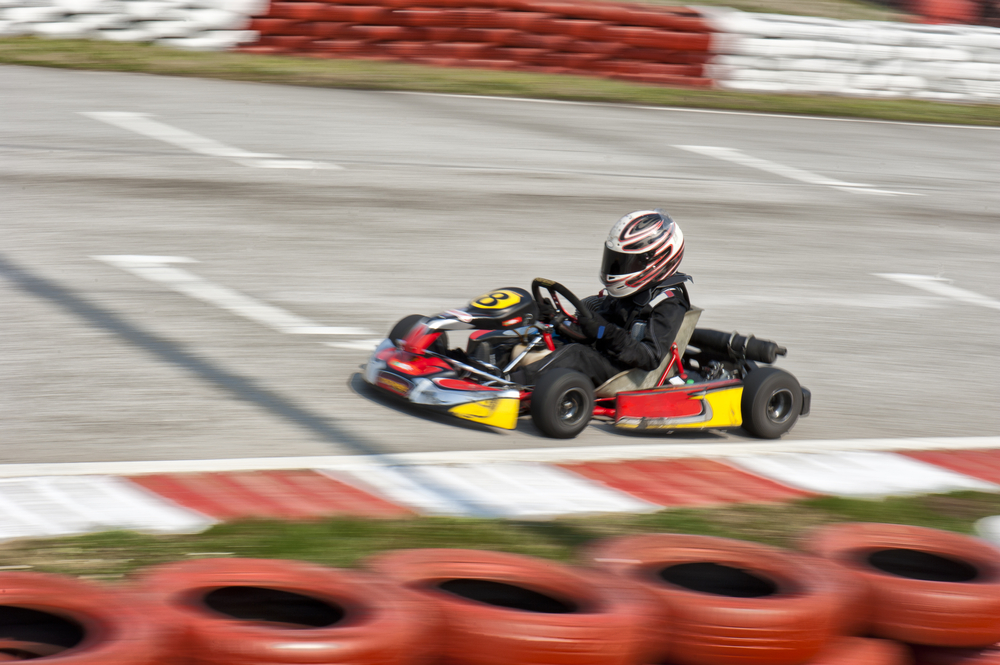
What Is the Difference Between Driving A Go-Kart And An F1 Car?
Now that we understand the differences between go-karting and Formula One vehicles/competitions, it is worth exploring the differences between driving each vehicle.
Driving A Go-Kart
While most go-karts are designed to be simple vehicles that are easy to drive, more advanced go-karts and competitions require a lot of skill to handle proficiently. Characteristics that make excellent go-kart drivers include aggressive driving, braking, and steering.
However, despite the g-force and speed of professional go-karts, most competitions/tracks feature simple karts designed for young children.
Driving A F1 Car
Driving a Formula One car is a physical, technical, and mental challenge reserved for drivers with years of driving experience, coupled with intensive training and guidance.
The first requirement for driving a Formula One car is that drivers need to be in peak physical fitness. A driver is expected to exhibit holistic cardio-vascular health and an impressive power-to-weight ratio.
Consequently, drivers have to reach a delicate balance whereby they are light enough to not be a burden on the car’s total weight while also having defined muscle mass.
The main reason drivers need to have high power-to-weight ratios is the amount of G-forces a driver will experience during a driving session. G-forces are the number of external forces a driver’s body will be exposed to during a race, particularly when cornering and braking at high speeds.
The technical challenge of driving a Formula One vehicle includes tire management and maintaining high RPMs to keep the car running efficiently during a race. These technical challenges extend to team dynamics and communication, whereas go-karting is mostly an individual sport.
Finally, driving a Formula One vehicle requires that a driver is at peak mental clarity and concentration, as the speed of a Formula One vehicle involves an awareness of one’s surroundings and vehicle condition.
How Much Does Go-Karting Cost vs F1?
Because of the accessible nature of go-karting and the complexity of Formula One, it’s not surprising to find out that there is a vast cost difference between the two sports. Let’s explore this cost division in greater detail below:
The Costs Of Go-Karting
Enjoying go-karting as a leisurely activity is a relatively inexpensive day out for friends and family; however, more serious go-kart drivers can expect to pay upwards of $11 000 for their kart, equipment, and tools.
Although $11 000 is a relatively inexpensive cost for motorsport, further racing time can result in additional expenses such as fuel, travel, tires, maintenance, updating licenses, and competition fees.
Thus while go-karting is an entry point for drivers looking to become professional, it is a financial sacrifice that typically requires sponsorship in light of minimal salary/compensation for drivers and teams.
The Costs Of F1
In contrast, Formula One is a highly elite and expensive sport reserved for drivers/teams who can afford the enormous financial sacrifices.
Along with labor costs, marketing, advertising, competition fees, penalties, ongoing maintenance, logistics, and drivers’ salaries (all of which can run into millions of dollars), most constructors spend between $150 million and $400 million on research and development alone!
Meanwhile, the cost of a Formula One car is over $20 million, which can be broken down as follows:
- Chassis: approximately $705 000.
- Floorboard and bargeboard: approximately $140 000
- Front wing: approximately $140 000
- Rear wing: between $85 000 and 150 000
- Halo: approximately $17 000
- Power unit: approximately $18 million
- Fuel tank: approximately $30 000
- Gearbox : approximately $350 000
- Hydraulics: approximately $170 000
- Steering wheel: approximately $50 000
- Brakes: approximately $80 000
- Set of four tires: approximately $2 500.
Why Do So Many F1 Drivers Begin Their Careers Go-Karting?
Because Formula One only takes the best and most experienced professional drivers, many develop their skills and acquire exposure through their performances across Formula 4, Formula 3, and Formula 2.
Consequently, go-karting is a common starting point for many young drivers looking to develop their race skills and attract the attention of investors/constructors.
Which F1 Drivers Began Their Careers Go-Karting?
At the time of writing, not a single driver on the 2022 Formula One grid didn’t begin their racing career in go-karting! Other Formula One drivers that started their careers in go-karting include, but are not limited to:
- Ayrton Senna,
- Michael Schumacher,
- Kimi Raikkonen,
- Jules Bianchi,
- Mark Webber,
- Nico Rosberg.
Conclusion
In conclusion, despite the similarities between go-karting and Formula One, as well as the transferable skills between each sport, there is a massive difference in the technology, money, and prestige behind go-karting compared to Formula One.
References
- https://en.wikipedia.org/wiki/FIA_Global_Pathway_from_Karting_to_Formula_One
- http://atlasf1.autosport.com/97/jpn/messham.html
- https://www.quora.com/Are-go-karts-small-F1-cars-or-are-F1-cars-big-go-karts
- https://www.crash.net/f1/news/1000137/1/drivers-hail-f1-s-new-rules-2022-it-s-gokart-race
- https://www.planetf1.com/news/esteban-ocon-2022-karting-comparison/
- https://en.wikipedia.org/wiki/Kart_racing

